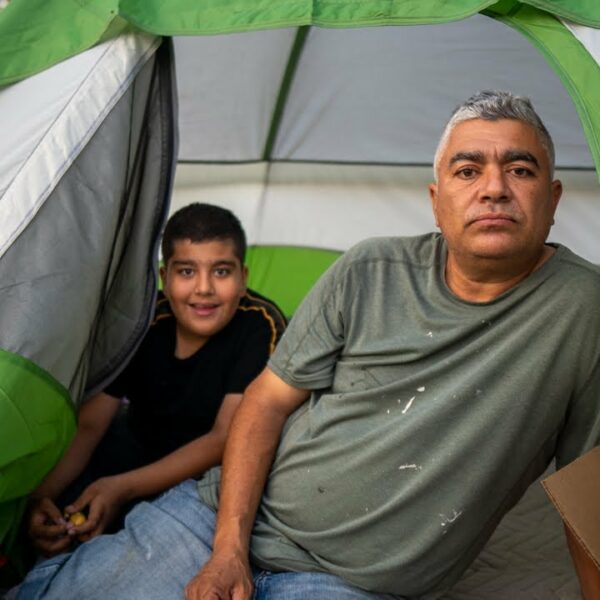At least 269,000 K-12 students experienced homelessness in California at the end of the 2018-19 school year. Not only are these numbers most likely significantly underestimated, with many families facing job losses and economic instability due to COVID-19, these figures are also likely to surge.
Unfortunately, the networks of schools, school districts, and local organizations that help homeless students are under-resourced. This makes this population even more vulnerable. California has more students than any other state in the country, yet the systems and resources in place aren’t sufficient enough to protect vulnerable children.
The Statistics
A study from UCLA’s Center for the Transformation of Schools surveyed found the growing needs of homeless students outweigh the capacity available to help them. Shockingly, this group has grown by 48% over the last decade.
In Los Angeles alone, there were more than 68,000 homeless students during the 2018-19 school year. Federal law requires that all school districts appoint a homeless liaison who can help students experiencing homelessness. The homeless liaison can help with transportation assistance, delivering learning materials, and providing meals and hygienic supplies.
However, liaisons say they often struggle to prioritize education for homeless students because there are so many children in need. Additionally, homeless students often have complex needs that must be addressed, such as mental health issues.
Despite the federal law to help homeless students, two-thirds of children in California go to schools with no federal assistance to address the damaging consequences of homelessness.
In schools where a homelessness liaison is appointed, these staff members are also responsible for identifying homeless students in the school and ensuring that teachers and other staff members are trained and capable of addressing their needs.
The report also states that one in five community college students, one in 10 California State University Students, and one in 20 University of California students are also affected by homelessness.
The Other States Battling Student Homelessness
California isn’t the only place dealing with student homelessness. Across the United States, public schools identified more than 1.5 million students experiencing homelessness during the 2017-18 school year. This figure is a 15% increase from the previous school year.
In addition, homeless children staying in motels increased by 17%. However, the figure of homeless students residing in emergency shelters or transitional accommodation lowered by 2%.
Of all the states, Florida and Texas saw the most significant increase in children experiencing homelessness. Public schools in Texas noted 231,000 homeless students during the 2017-18 school year, compared to 111,000 during the 2016-17 school year.
In Florida, public schools recognized 95,000 students as homeless during the 2017-18 school year compared to 75,000 the previous year.
New York, Nevada, Ohio, and Pennsylvania also saw dramatic increases in student homelessness. Overall, 16 states experienced significant growth of homeless students. Additionally, these figures are undercounted as they only include those enrolled in public schools.
The figures fail to identify students who fell into homelessness during the summer holidays, those who left school, and younger children not registered in preschool programs. As such, the figures are likely to be significantly higher.
This undercount can be shocking. Last year California conducted an audit on the numbers of homeless students and discovered that the state’s schools had undercounted the group by at least 37% during the 2017-18 school year.
While figures are already high across the United States, it’s clear identification efforts need much more work before they can precisely identify how many youths are experiencing homelessness. It’s essential that we know who is experiencing homelessness to help them move into better situations. Often, undercounted homeless students are invisible, overlooked and don’t receive the help they require.
The Impact of Homelessness on Students
Homelessness leads to extremely adverse impacts on student learning and success. Compared with housed students, those experiencing homelessness are twice as likely to be chronically absent or suspended.
Homeless students are also more likely to have a lower high school graduation rate and half as likely prepared to attend state universities. As you can imagine, homeless students have a lot fewer opportunities than their housed counterparts.
Students of color disproportionately experience homelessness. While Latinos make up 54% of students in California, they comprise 70% of students in the state who are unhoused. Likewise, black students represent 9% of the same demographic, yet they make up 5% of the student population.
LGBTQ students also experience significantly high rates of homelessness due to family rejection and other issues the group commonly face.
Many educators haven’t received sufficient training surrounding homelessness. They may rely on stereotypes that result in unhoused children feeling misunderstood, ignored and isolated. These students often struggle to seek mentors and support.
Homeless students also lack the stability and support that is so crucial to succeed academically and mentally. Not only does homelessness severely affect a student’s education, but it also threatens their social and emotional development. Even after students are housed, the impact and negative experience of homelessness linger.
Reducing Student Homelessness
There are certain policies and practices that schools and districts can implement to reduce student homelessness. Recommendations to education leaders include:
- Refining and standardizing systems for detecting homeless students
- Concentrating on outreach efforts to inform homeless students and their families of their rights
- Actively working and communicating with students to help them remain in school
- Helping homeless students connect to outside support systems
- Encouraging school homeless liaisons to work with local organizations, agencies, or businesses to help offer homeless students the services and supports they need to be successful
- Leveraging early warning systems to reduce student homelessness. These systems can track student attendance, behavior and course performance to identify which students are falling behind. This is especially relevant for students showing warning signs of family and housing struggles.
While it’s possible that homeless students’ needs vary across the states, these guidelines are helpful for education leaders to follow to combat student homelessness. We must work to reduce these shockingly high rates of student homelessness in the United States.













